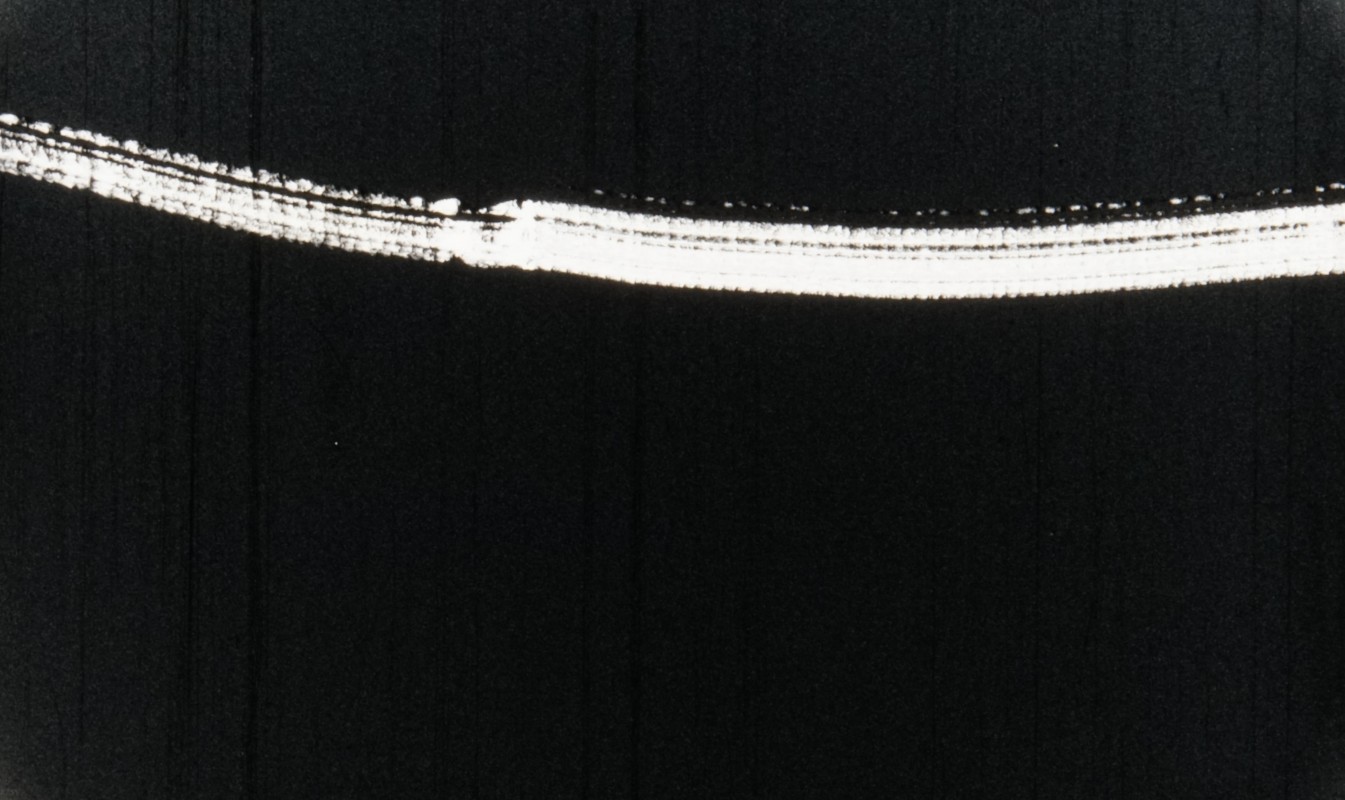Cutting edge of film: Nishikawa to premiere new work at the New York Film Festival

When we think of film, we often imagine a product and not a performance: scenes scripted and carefully shot, hours spent on the cutting room floor.
Associate Professor and Chair of Cinema Tomonari Nishikawa’s new film, Six Seventy-Two Variations: Variation 1, tears that image to shreds — literally, with a wood-carving knife. The film is also a live performance and will premiere Oct. 3 and 4 at the New York Film Festival in Lincoln Center. It will appear in Currents Program 8: Vibrant Matter with the work of other abstract filmmakers, including cinema lecturer Daïchi Saïto’s earthearthearth.
Filmmakers from all over the world submit their work to the festival, which is close to Nishikawa’s heart; his senior thesis project, “Apollo,” had its first public screening there in 2003, the same year he graduated from Binghamton University. Back then, it was part of Views from the Avant-Garde, which later evolved into Projections and, now, Currents. Throughout all the name changes, the series continues to showcase innovative and experimental films and videos.
In 2013, Nishikawa performed an earlier version of this piece at Spool Contemporary Art Space in Johnson City.
“I had been working on the other film projects since then, but the pandemic would give me an opportunity to focus on this performance piece, as I could not travel to work on the other projects,” he said.
The title is a reference to the looped 16 mm film he uses in the performance, which contains 672 frames, the length of film his spring motor-camera can run when fully wound.
Wielding the knife, Nishikawa creates an abstract meditation in motion, its sharp edge carving lines onto a blank loop of running film during the process of projection. The dark gray background subtly shifts during this process of cutting, as the white lines dart in horizontal motion over the flickering film grain.
He also scratches the area of the film reserved for the optical soundtrack, producing the percussive throbbing noise that serves as the film’s score. Because of the distance between the projector’s gate and the position of the photocell that reads the visual information for sound, the noise emerges about a second after the scratched pattern appears on the screen.
“I do not intend to deliver any message to the audience, but some viewers might feel something from the duration of the performance,” Nishikawa said. “This piece is like an abstract animation plus noise music.”
